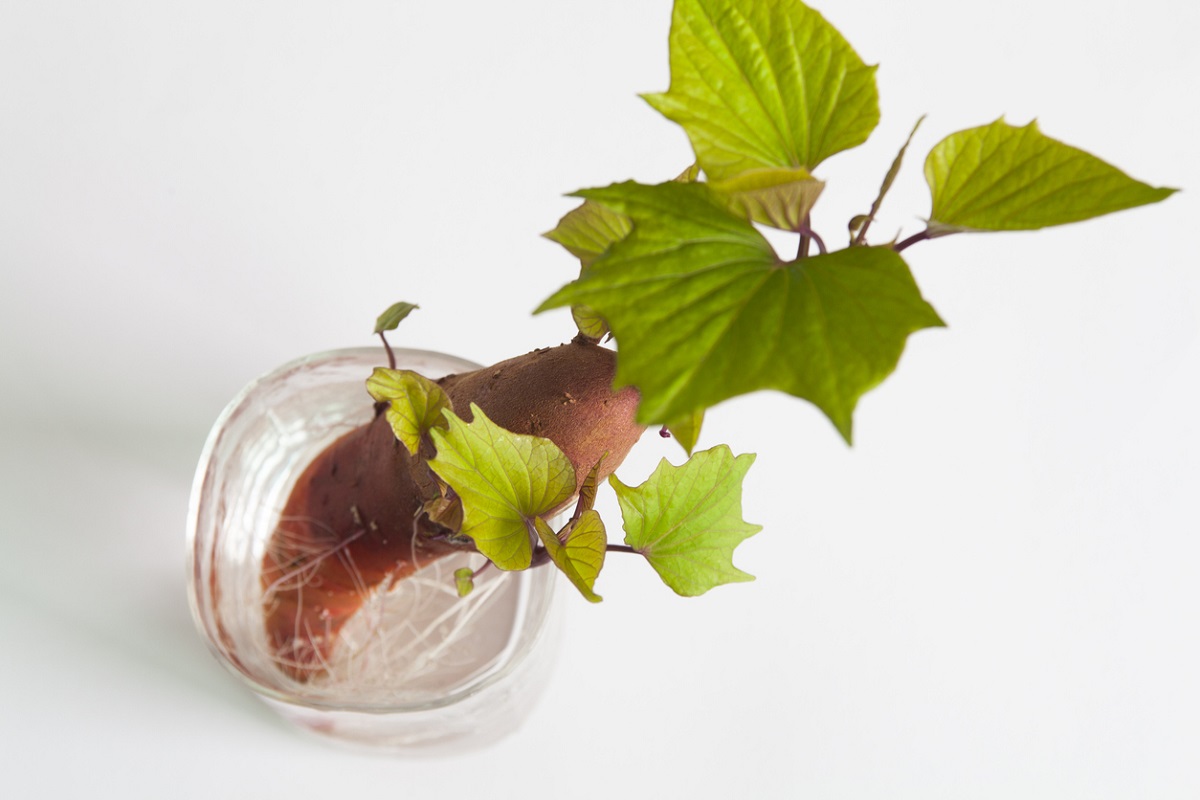
Alternative Agrobacterium Method Bypasses Tissue Culture to Multiply Sweet Potato Cultivars
December 21, 2022| |
Chinese scientists were able to multiply sweet potatoes by utilizing both Agrobacterium rhizogenes and the crop's natural transgenic trait. Their method skips the need for tissue culture to obtain genetically modified sweet potato plants.
According to previous studies, sweet potato is a naturally transgenic plant that contains two Agrobacterium transfer DNAs: IbT-DNA1 and IbT-DNA2. On the other hand, Agrobacterium rhizogenes has two transferable TNA regions: TR-DNA that corresponds to IbT-DNA1 and TL-DNA to IbT-DNA2. The scientists theorized that this bacterium-plant relationship is more symbiotic than parasitic, and that Agrobacterium rhizogenes can be used to induce hairy roots upon wounding and infecting plant leaves or stems. The hairy roots may then contain the T-DNA of the bacterium's binary vector if co-transferred, and these roots may serve as adventitious roots with the potential to develop into storage roots with heritable genetic modifications.
To test their hypothesis, the scientists used Shangshu 19 sweet potato variety. They inoculated its vine cuttings with Agrobacterium rhizogenes K599-IbRPS5a:GUS and planted them under natural field conditions where they also induced hairy roots and plant growth. Initial PCR testing found that nearly 100% of the infected vine cuttings could produce transgenic positive storage roots. Whole plants were regenerated and underwent qRT-PCR analysis which showed that 90-100% of the infected plants formed positive storage roots.
The study determined that the Agrobacterium rhizogenes method is faster, simpler and more efficient than having to go through tissue culture. The researchers also concluded that the hairy root lines established from single root meristems are cellular clones, and every transgenic storage root represents an independent transformation event.
More details from Plant Biotechnology.
| |
You might also like:
- GM Sweet Potato Occurs Naturally
- Researchers Analyze the Sweet Potato Proteome
- Sweet Potato Genome Provides Insights on its Revolutionary History
Biotech Updates is a weekly newsletter of ISAAA, a not-for-profit organization. It is distributed for free to over 22,000 subscribers worldwide to inform them about the key developments in biosciences, especially in biotechnology. Your support will help us in our mission to feed the world with knowledge. You can help by donating as little as $10.
-
See more articles:
-
News from Around the World
- Key Factors Identified for Establishing a Global Gene Drive Registry
- Striga Smart Sorghum for Africa Project Launched in Kenya and Ethiopia
- FAO Publishes Issue Paper on Gene Editing and Agrifood Systems
- Scientists Use Three Techniques and Found Three Species have Different Ways to Fight Drought
- Including GM Tech in Academic Curriculum Can Benefit Future Biotech Scientists
- New Zealand to Implement Plant Variety Rights Act and Regulations in 2023
- Sequencing Project of All Known Species of Euglenoids to Unleash Breakthroughs
- EFSA Releases Scientific Opinions for Renewal of Authorization of 3 GM Soybeans
-
Research Highlights
- Alternative Agrobacterium Method Bypasses Tissue Culture to Multiply Sweet Potato Cultivars
- Enhanced Prime Editing Leads to Heritable Mutations in Maize
-
Plant
- CRISPR Plant Market Accelerating in Latin America
- Flexible CRISPR-Combo System Used to Edit Genomes in Plants
-
Read the latest: - Biotech Updates (December 17, 2025)
- Gene Editing Supplement (December 17, 2025)
- Gene Drive Supplement (February 22, 2023)
-
Subscribe to BU: - Share
- Tweet

